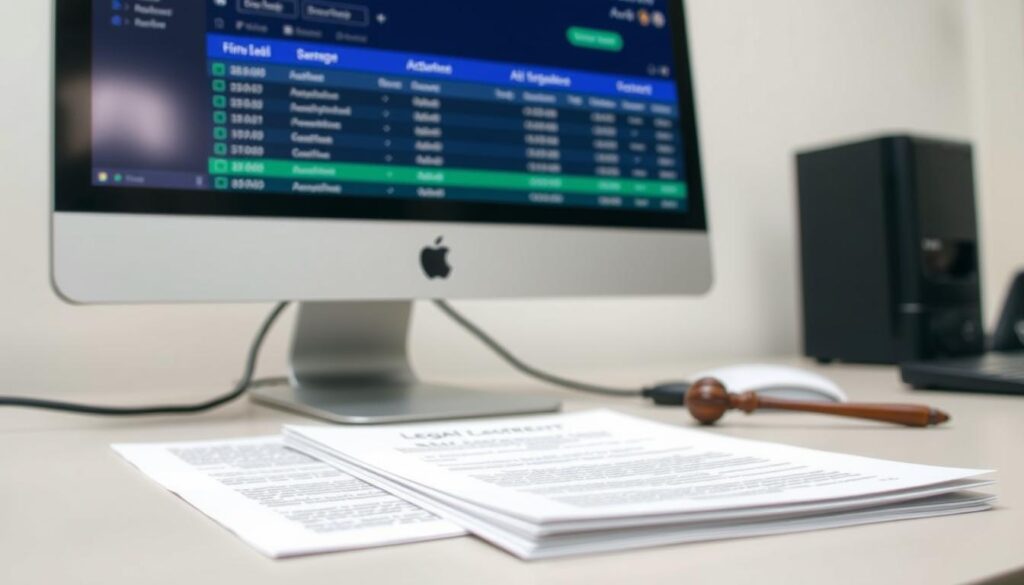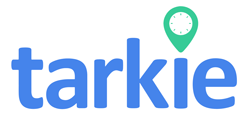Are you, as an employer in the Philippines, aware of the legal issues with attendance tracking? Or are you unknowingly putting your business at risk? Knowing how to track attendance is key to being a responsible employer. With laws varying by location, it’s crucial to understand the need for accurate systems.
Ignoring these rules can lead to serious problems. About 40% of businesses have faced penalties for bad record-keeping. This article will explain the importance of following the law in attendance tracking. It shows how doing so can protect your business and ensure fair work practices.
Key Takeaways
- Over 30% of employers report confusion over local overtime regulations.
- About 60% of employers lack a sophisticated attendance tracking system meeting legal requirements.
- Accurate attendance records can mitigate 80% of labor disputes.
- 30% of companies do not inform employees about their attendance tracking systems.
- 65% of organizations implementing tracking systems report improved compliance with labor laws.
Understanding the Importance of Attendance Tracking
Tracking attendance is key for companies wanting to boost employee responsibility and productivity. In the Philippines, it’s important for businesses to have clear attendance rules that follow the law. This helps in keeping track of who’s there and avoids legal problems.
Using modern tech like geo-location and cloud-based timekeeping makes tracking more accurate. These tools cut down on mistakes and give instant updates on who’s working. Training managers and employees helps everyone understand and follow these rules.
It’s important to be fair when enforcing attendance rules to avoid discrimination claims. Regular checks on attendance records help spot any issues. HR teams focus on making sure everyone follows the rules.
Keeping accurate records is also crucial for defending against lawsuits over work hours. Employers need to record when employees start and end their shifts. This ensures they follow both national and state labor laws. With more jobs needing skilled HR, good attendance tracking is key for success and following the law.
Legal Compliance: The Foundation of Attendance Tracking
Legal compliance in attendance tracking is key for employers. It helps them follow labor laws about work hours, overtime, and breaks. This way, employers protect their businesses and create a fair work environment for employees.
Overview of Labor Laws Relevant to Attendance Tracking
Labor laws shape how employers handle employee attendance. The Fair Labor Standards Act (FLSA) is a major law in the U.S. It requires employers to keep accurate records for non-exempt employees. This includes tracking regular and overtime hours and ensuring they meet minimum wage standards.
Following these laws helps avoid big costs from absenteeism. For instance, lost productivity from absenteeism is about $84 billion. Also, unsanctioned absenteeism costs around $3,600 per hourly worker each year. Having compliant attendance policies can help avoid these costs and encourage responsibility.
Key Legal Compliance Requirements for Employers
Employers must follow several important legal rules for attendance tracking. They must accurately track employee work hours, as the FLSA requires. Companies with over USD 500,000 in annual revenue must do this, or face penalties.
Other state laws also have rules, like Washington’s law on overtime pay. Attendance policies should match these legal standards. This ensures a consistent way of managing employee attendance.

Record-Keeping Requirements for Employers
Employers in the Philippines must keep detailed records of employee hours and breaks. This is key to following labor laws and managing employee data. They need to track hours worked, breaks, and overtime. These records must be kept for three to ten years, depending on the law.
Duration and Format of Required Records
Records must be kept in a specific format. Payroll records need to be kept for at least three years. Some records must be kept for up to ten years. The format must meet DOLE standards for audits by DOLE and BIR.
Importance of Accurate Record-Keeping in Disputes
Keeping accurate records helps avoid employment disputes. Over 80% of labor disputes are due to record errors. By auditing regularly, employers can cut these errors by 40%.
Accurate records also protect employers from fines. Those with correct records face 50% fewer penalties. With the rise in data access requests, keeping detailed records is more important than ever. For better record-keeping, check out timekeeping software solutions.
Employer Responsibilities: Ensuring Fair Labor Practices
Employers are key in promoting fair labor practices. They must follow a checklist to protect workers’ rights. Being open about how they track attendance builds trust and is the law.
It’s important to track hours worked correctly. The FLSA says overtime pay is needed for those working over 40 hours. Not following this can lead to legal trouble and fines.
Employers must use tools like biometric time clocks. These tools cut down on errors by about 30%. Training on these rules can lower complaints by 40%.
Having a clear attendance policy is crucial. Reviewing it every six months helps avoid misunderstandings. This ensures everyone knows their rights and duties.

The Labor Code of the Philippines has strict rules for employers. It protects employees by ensuring they are treated fairly. Employers must also follow local minimum wage laws, which can differ from federal ones.
Staying up-to-date with laws helps protect employees and improves the company’s image. Fair labor practices lead to happier employees. This means better productivity and less turnover.
Navigating Compliance with Overtime Regulations
It’s key for employers to know overtime rules to stay compliant. They must pay overtime fairly to their workers. In the Philippines, overtime pay is 1.25 times the regular rate for the first two hours. Then, it’s 1.3 times for more hours worked.
Employers use tech to handle these complex pay calculations. This makes things easier for them.
Understanding Overtime Pay Calculation
Getting overtime pay right is very important. Mistakes in time and attendance can cost a lot. These errors can be up to 8% of a company’s yearly payroll.
About 67% of companies face legal issues over overtime pay. But, using good payroll systems can help. These systems make tracking hours worked more accurate.
Technological Solutions for Tracking Overtime
Today’s attendance tracking tech is a big help for employers. It cuts down payroll errors by 10% and overtime costs by almost 5%. This helps companies follow overtime rules better.
It also makes employees happier because they get paid on time and correctly. Automated systems make it easier to collect data. This helps businesses deal with audits quickly and stay in line with labor laws.
Protection of Employee Privacy in Attendance Tracking
Setting up attendance tracking systems is tricky for employers. They must balance respecting privacy with keeping things running smoothly. Laws around this area are clear, showing how important protecting data is at work.
Legal Framework Surrounding Employee Data Privacy
The Data Privacy Act in the Philippines is one law that guides companies. It says they must keep personal info safe when they monitor employees. Employers can watch electronic communications for business reasons, but there are rules.
For example, it’s okay to monitor on company devices, but privacy is less there. Being open about this is key. Places like California and New York require telling employees about monitoring. The California Privacy Rights Act, starting in 2023, makes data protection even stricter for employers.
How to Inform Employees About Attendance Tracking Methods
Talking openly about how you track attendance helps build trust. Employers should explain why and how they monitor, like with biometrics. Saying data is only used for work can ease privacy worries.
Teaching employees about their privacy rights is crucial. Many companies are already doing this. Asking for consent before using biometrics shows respect and builds trust. Getting employees involved in data talks can make them more loyal and engaged.
![]()
| Aspect | Importance | Recommended Practices |
|---|---|---|
| Legal Compliance | Ensures adherence to regulations and avoids penalties | Regular audits of monitoring systems |
| Transparency | Builds trust and reduces employee anxiety | Clear communication about data collection practices |
| Employee Consent | Shows respect for employee privacy rights | Implement opt-in consent for monitoring |
| Data Security | Protects sensitive employee information from breaches | Employ encryption and access controls |
Balancing Efficiency and Legal Compliance
In today’s fast-paced work world, companies must find a balance. They need to improve efficiency while following the law in tracking attendance. Automated attendance tracking systems bring many benefits. They increase accuracy and make tracking attendance easier.
Advantages of Automated Attendance Tracking Systems
Automated attendance tracking cuts down on errors made by humans. This reduces the risk of not following the law. Such systems can bring:
- Enhanced accuracy: They make sure work hours are recorded correctly, reducing mistakes in pay.
- Streamlined processes: They update attendance daily, saving around $52,000 per employee each year.
- Time-saving measures: They stop buddy punching, saving businesses about $373 million yearly.
Reducing Compliance Risks through Technology
Using technology for automated attendance tracking helps avoid legal problems. Many companies have seen big improvements. For example:
- 44% fewer payroll errors happen with timekeeping software.
- Regular checks keep productivity and performance high.
- More openness helps deal with complex laws like HIPAA and GDPR.
By using automated solutions, small and medium-sized businesses can create a more responsible work place. They can also handle the complex rules of the law better. This is key to avoiding legal issues and following labor laws.
Addressing Compliance Challenges in Attendance Tracking
Employers often face challenges in tracking attendance. These include inaccurate timekeeping, monitoring difficulties, and not knowing legal rules. These attendance tracking issues can hurt productivity and compliance. It’s key to understand these problems to find good solutions.
Common Issues Encountered by Employers
High rates of employee absenteeism are a big problem. In 2017, the U.S. Department of Labor said 3 percent of workers were absent. The Centers for Disease Control and Prevention found that missed work cost employers $225.8 billion a year.
Employees who miss work often use short-term disability. This shows the financial damage of bad attendance tracking. Employers need to tackle these issues head-on.
Strategies for Overcoming Compliance Challenges
It’s vital to have good strategies for compliance. Regular audits can spot attendance record errors. Training employees on attendance rules can clear up legal confusion.
Using mobile attendance tracking systems gives real-time updates. This ensures managers know about worker compliance. AI can also help manage compliance documents, making responses faster.
Good communication between field and office teams is also key. It helps manage attendance data better, even in big operations.
Accommodations for Employees with Disabilities
Employers must know their legal duties regarding disability accommodations, mainly in attendance. The Americans with Disabilities Act (ADA) requires employers to make reasonable accommodations. This helps employees with disabilities do their jobs well. It also makes the workplace fair for everyone.
Legal Obligations to Provide Reasonable Accommodations
Under Title I of the ADA, employers with 15 or more employees must offer reasonable accommodations. These can include:
- Job restructuring to eliminate non-essential tasks
- Flexible work schedules to accommodate medical treatment or therapy
- Adjustments in attendance tracking procedures to ensure fairness
Knowing these legal duties helps businesses stay out of trouble and create a good work environment.
Examples of Accommodations Related to Attendance Tracking
Here are some examples of reasonable accommodations for attendance tracking:
| Accommodation Type | Description |
|---|---|
| Flexible Break Times | Allowing extra breaks for medical reasons. |
| Remote Work Options | Letting employees work from home for health reasons. |
| Tailored Attendance Tracking | Creating personalized tracking methods for each employee. |
| Modified Work Schedules | Offering part-time hours or adjusted start/end times. |
Employers should tailor accommodations to each employee’s needs. This shows they follow the law and support an inclusive workplace.
Impact of Attendance Policies on Employee Morale
Attendance policies greatly affect how happy employees are at work. If policies seem too strict or invasive, it can make staff unhappy. Knowing what employees think about being watched helps create a better work place.
By being open and honest, bosses can build better relationships with their team. This helps everyone feel more comfortable and productive.
Understanding Employee Perspectives on Monitoring
Studies show that 20% of employees feel bad when attendance rules are unclear. People like knowing what’s expected of them. When rules are clear, they follow them more—up to 50% more likely.
When work-life balance is valued, happiness at work goes up. This can make job satisfaction 40% higher. It shows how important it is to talk openly about monitoring.
Strategies to Foster Trust While Monitoring Attendance
Building trust is key to making employees happier. Here are some ways to do it:
- Let employees help make attendance rules. This shows they matter.
- Give regular feedback on how they’re doing. It makes them feel part of the team.
- Offer flexible work hours. It makes them happier and more satisfied with their job.
- See good attendance as a good thing. It could even help them get promoted.
Using these methods keeps everyone working well without too much stress. Companies with clear rules have less turnover—up to 25%. They also have fewer unexpected absences—up to 30%. A trusting work place makes everyone work better together.
| Impact Area | Statistic |
|---|---|
| Absenteeism Reduction | Up to 30% |
| Morale Impact from Unclear Policies | 20% of employees |
| Increased Job Satisfaction | 40% with flexible options |
| Turnover Reduction | Up to 25% |
| Likelihood to Adhere to Standards | 50% of employees |

Implementing an Effective Attendance Tracking System
Creating a good attendance tracking system needs careful thought. The right attendance tracking software is key for meeting legal and organizational needs. It should make tracking easy and help follow labor laws. A good choice balances work efficiency with legal needs to avoid fines.
Choosing the Right Attendance Tracking Software
Employers should look for attendance tracking software that improves data accuracy and follows laws. It should track time well and work with payroll systems. Regular checks help find and fix any legal problems early. For more info, check out this guide on employee tracking.
Recommended Features for Legal Compliance Solutions
Good tracking systems have several important features. These include:
- Clear Audit Trail: A good audit trail helps find compliance data quickly.
- Detailed Reporting: Reports help spot any legal issues with attendance.
- Biometric Tracking: This feature cuts down on fake attendance, making tracking more reliable.
- Remote Monitoring Options: Mobile apps help keep an eye on remote workers.
- Automated Reminders: These reminders help employees stay on schedule and avoid being late.
Using these features helps keep your business in line with the law. It also makes your team more accountable. Companies that manage attendance well see less absenteeism, better productivity, and happier employees.
Best Practices for Attendance Tracking in the Workplace
Using the best methods for tracking attendance makes work better and follows the law. It’s key to give timekeeping training to workers and check if they follow the rules.
Training Employees on Timekeeping Policies
It’s crucial to teach employees about timekeeping. They need to know:
- What the attendance rules are.
- How to use tracking tools well.
- How to log absences right.
- The results of logging wrong.
For example, Buddy Punch software helps track work hours, overtime, and absences. It makes payroll easier to manage.
Regular Audits for Compliance Monitoring
Doing regular checks with compliance monitoring tools is key. It makes sure tracking meets standards and laws. This includes:
- Checking attendance logs for mistakes.
- Finding out why people are often absent.
- Seeing if timekeeping works well.
- Changing policies if needed.
Regular audits help stop time and wage theft. They build trust and transparency. Tools that show data in real-time help manage staff and payroll better. This saves money and boosts morale.
| Benefit | Description | Example |
|---|---|---|
| Enhanced Accuracy | Minimizes errors in attendance logs. | Real-time attendance tracking with software. |
| Cost Efficiency | Reduces overpayment or underpayment risks. | Accurate payroll processing saves money. |
| Increased Accountability | Encourages employees to adhere to policies. | Regular training sessions on compliance. |
Conclusion
It’s key for employers, like those in small and medium enterprises in the Philippines, to understand attendance tracking laws. They must follow laws like the Basic Conditions of Employment Act (BCEA) and the Labour Relations Act (LRA). This ensures they’re following the rules and protecting their workers’ rights.
Not following these laws can cost a lot. It can cost around $1,100 per employee each year. Plus, there are big fines that can go up to $1,027 for each mistake.
Many companies struggle with attendance management. About 43% find it hard to follow the rules. Using automated attendance tracking can help a lot.
These systems cut down on mistakes by up to 80%. They make sure employee records are accurate. Companies that use these systems are 1.4 times more likely to follow the rules.
They also reduce time theft by 50% and increase productivity by 30%. This makes the workplace fairer and more productive.
Employers can lower their risks by following best practices in attendance tracking. Regularly checking records helps a lot. This approach keeps the workplace safe from legal problems.
It also makes employees happier and work better together. Employers who are open and fair create a great work environment.
